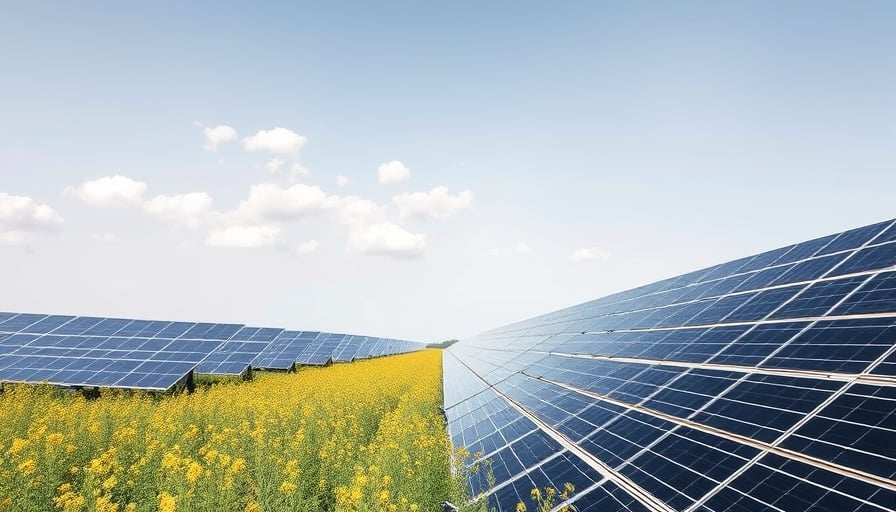The Shenzhen‑listed Robo Technik Intelligent Technology Co., Ltd. (ROBO) has quietly positioned itself at the intersection of several high‑growth sectors that are currently commanding investor attention. While the company’s own trading session on 29 Oct. saw its shares closing at CNY 222, the broader market dynamics—particularly the surge in solar‑related ETFs and the projected explosion of AI‑accelerator demand—offer a clear framework for evaluating ROBO’s strategic trajectory.
1. Solar‑PV ecosystem gains new momentum
The Shenzhen‑based solar ETF (159857) posted a 1.6 % intra‑day rise, buoyed by net subscriptions exceeding 1.1 million units. Its top‑holding list includes Hengyuan Green Energy, Tianhe Power, and ROBO (alongside other major players such as SunPower and Lianhua). This is significant because the ETF tracks the CSI 1000‑level index that captures the full value chain of the photovoltaic industry—from wafer manufacturing to module assembly and system integration.
The ETF’s growth reflects policy shifts announced by the Fujian provincial government and the National Energy Administration. The “market‑price” approach to grid‑connected solar and wind is slated to take effect from 1 Jan 2026, implying that the demand for high‑quality, high‑efficiency manufacturing equipment—such as Robo’s clean‑energy automation lines—will only increase. In a sector where margins can be compressed by intense price competition, the ability to deliver cost‑effective, precision‑controlled production lines is a key differentiator.
2. AI‑chip boom creates indirect upside for automation
On 29 Oct., Nvidia’s CEO revealed that the Blackwell GPU will ship 20 million units next year, a five‑fold jump from the 4 million Hopper units in the previous generation. While Nvidia’s core revenue will be captured in the US market, the ripple effect on the Chinese manufacturing ecosystem is unmistakable. The supply chain includes PCB manufacturing, liquid‑cooling, and, crucially, precision assembly lines for high‑density interconnects and test equipment—all of which fall under Robo’s product portfolio.
The article also highlighted the upcoming launch of a CPO (Chip‑on‑Package‑on‑Board) product in Q3 2025, with Robo’s investors eagerly awaiting the rollout. The CPO technology, designed to reduce power consumption and thermal drift, dovetails with Robo’s expertise in FPC layup, sorting, and multi‑function testing. As the demand for integrated, high‑speed data paths swells, firms that can provide turnkey automation solutions for CPO production will capture a significant share of the market.
3. Robo’s position within the industry
ROBO’s offerings span:
- Manufacturing execution systems (MES) tailored for clean‑energy, electronics, automotive, food, and pharmaceutical sectors.
- Diffusion, PECVD, PERC, and wet‑processing automation for photovoltaic cell manufacturing.
- Assembly and test lines for components such as motor brushes, transformer coils, pumps, valves, and motors, plus specialized lines for valve bodies.
- Smart SMD storage, FPC layup, laser cutting, sorting, and multi‑function testing—all critical for high‑volume, high‑precision production.
- Bagged milk packaging automation systems, illustrating the breadth of its industrial reach.
With a market cap of CNY 37.2 billion and a 52‑week high of CNY 306.68, the stock has demonstrated resilience despite a negative P/E ratio that reflects the sector’s cyclical nature. The company’s headquarters in Suzhou—an industrial hub—provides logistical advantages for supplying both domestic and international customers.
4. Forward‑looking synthesis
The convergence of renewable‑energy policy, AI‑driven data centers, and high‑density packaging technology creates a compelling growth narrative for Robo Technik. The solar ETF’s ascent signals a tightening of the photovoltaic supply chain, where automation efficiency becomes a premium. Simultaneously, the AI‑chip boom drives demand for precision assembly, testing, and cooling solutions—exactly the domains where Robo has established expertise.
For investors, the key takeaways are:
- Diversified application base: Robo’s solutions serve clean‑energy, semiconductor, automotive, and pharmaceutical manufacturing, mitigating concentration risk.
- Strategic timing: Upcoming policy rollouts (e.g., Fujian’s grid‑price reform) and product launches (CPO, Blackwell GPU supply chain) align with the company’s product strengths.
- Operational advantage: Suzhou’s industrial ecosystem and Robo’s comprehensive automation suites position it well to capture a larger share of high‑margin production lines.
In sum, Robo Technik’s focus on high‑precision, scalable automation aligns with the trajectory of two of China’s most dynamic industrial sectors. The company stands to benefit from both the expansion of the renewable‑energy manufacturing base and the escalating demands of the AI‑chip production ecosystem.
